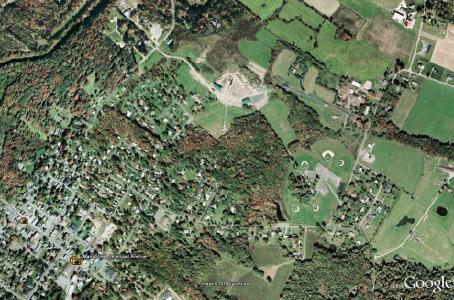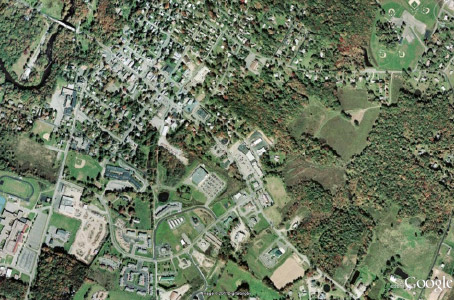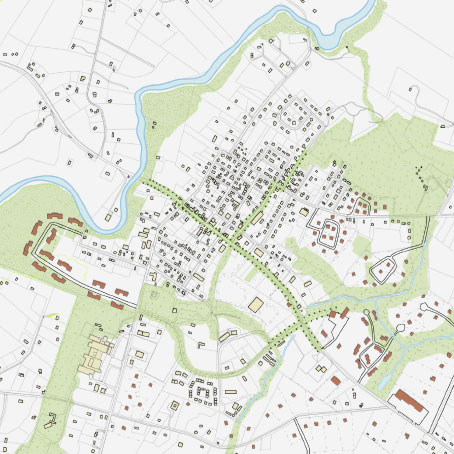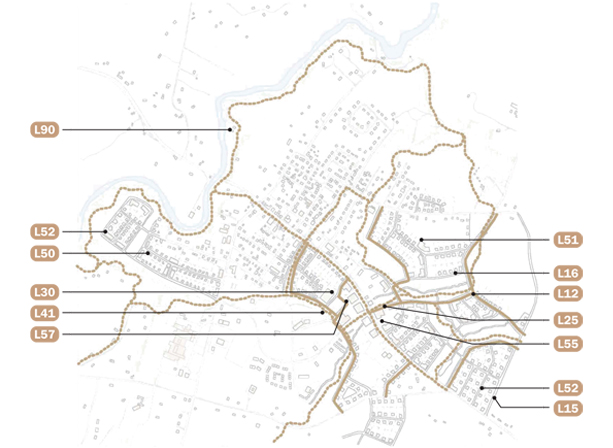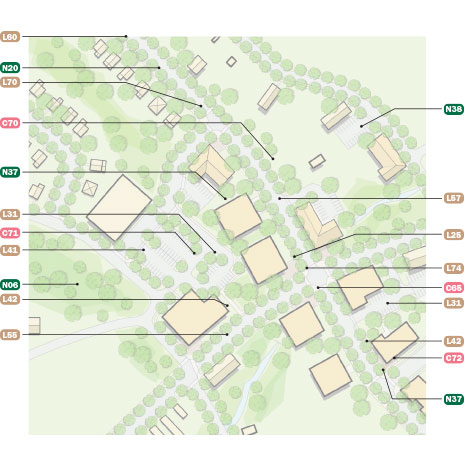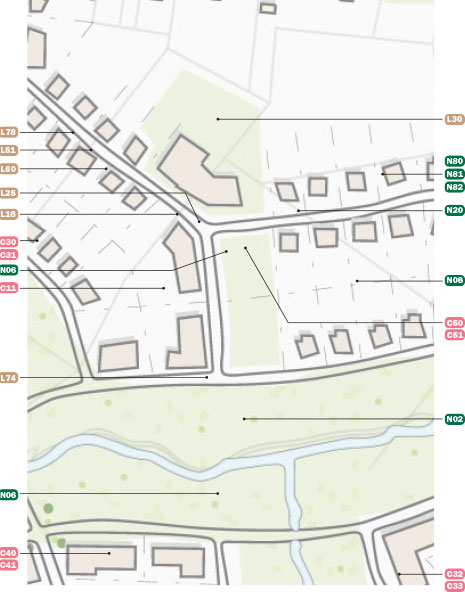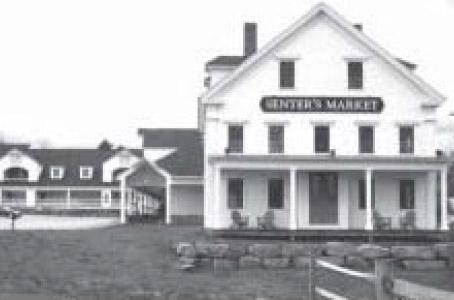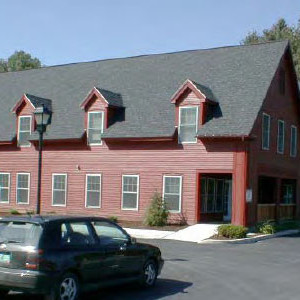Edges Overview
Common Characteristics of Edges:
- The area is developed, but the intensity of existing development is not as high as the adjacent neighborhoods or downtown.
- The uses are not mixed the way they are in the adjacent downtown; there may be both commercial and residential uses but these are primarily larger, separate developments.
- There are multiple opportunities to connect to the street grid of the adjacent downtown.
- There are almost no mixed-use buildings.
- Pictured right: the edge of downtown or the edge of an older neighborhood.
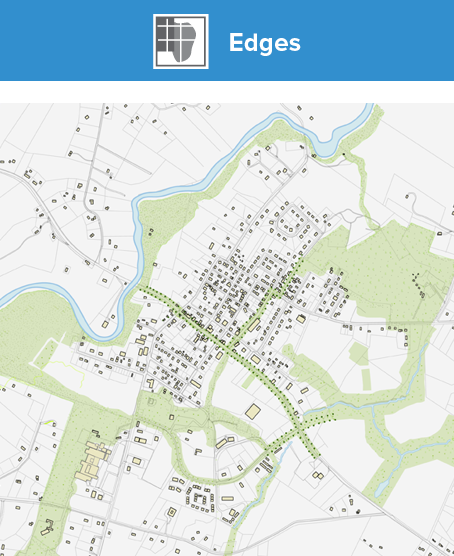
Edges are places into which the street-and-block network and land use patterns of a downtown can be extended. It may be completely undeveloped land. It is more likely that it will be a place that already has some development and infrastructure but at a greatly reduced density so that there is an opportunity for a significant increase in development. New development at the edge should as much as possible feel like a seamless extension of the existing urbanized areas and so the mix of land uses may be similar but less intensive.
Edges Development Approaches
The underlying “green infrastructure” is used to shape the development pattern, creating a continuous green network that maintains the integrity of natural systems and becomes a community amenity, including new parks, trails and greenways.
A robust street network creates connections among parcels and between the expansion area and the existing center. The network connectivity should try, as much as is practicable, to approximate the street and block pattern of the center.
Streets are designed for people, with continuous sidewalks, lighting, landscaping and other pedestrian amenities. Street landscaping/urban forestry help maintain the continuity of natural systems from the landscape to and through the center. Buildings are oriented towards the street.
Commercial areas are designed to balance pedestrian and automotive access (see design guidelines for commercial corridors). Parking is located behind or to the sides of buildings as much as possible.
Mixed use development is encouraged to enable more walking between destinations.

Preferred Best Practices for Edges
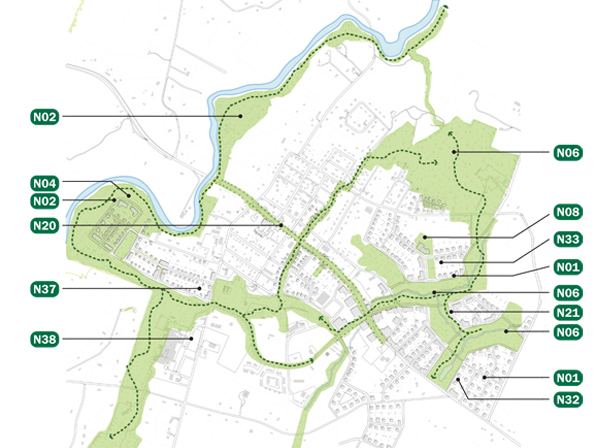
Create an Urban Forest
Create Linked Open Spaces
Protect Natural and Scenic Resources
Additional Edges Design Guidelines
Detail Plan: New Commercial Center
Although this is not the village center main street, it is still organized according to the same principles of connectivity, green infrastructure and mixed-use, and many of the same design principles apply...
All buildings have a positive relationship to the street with entrances facing the street. Buildings are sited along uniform set-back lines. Corner properties define the space of the intersection.
The open spaces between the buildings are well landscaped in a coherent and coordinated way and link to the surrounding street network.
Parking is organized into smaller interconnected lots behind retail and mixed-use buildings. Access to parking lots is rationed and cross-access agreements are promoted to minimize the number and size of driveways and minimize pedestrian-auto conflicts.
On-street parking should be promoted where possible.
Intersections are traffic-calmed and pedestrian-friendly.
Streetscape and sidewalk improvements also make this a pedestrian-friendly environment.
